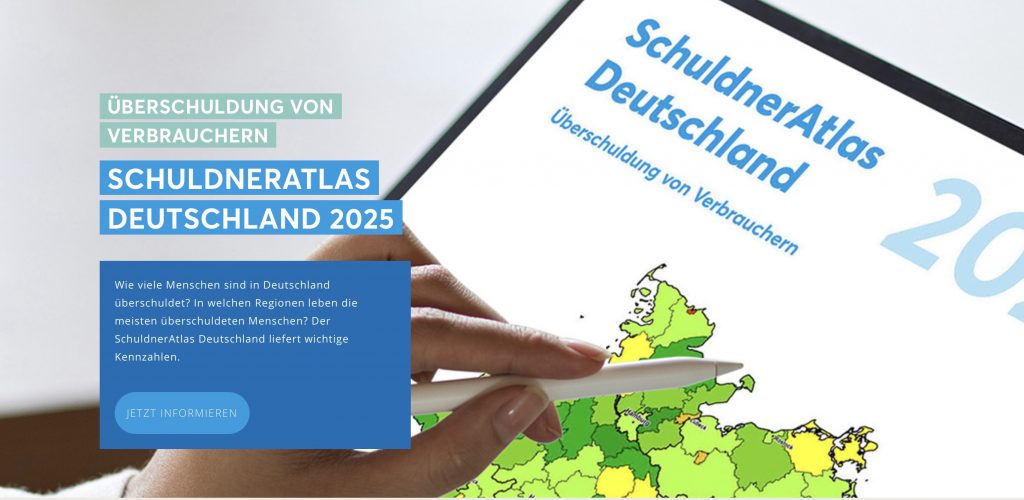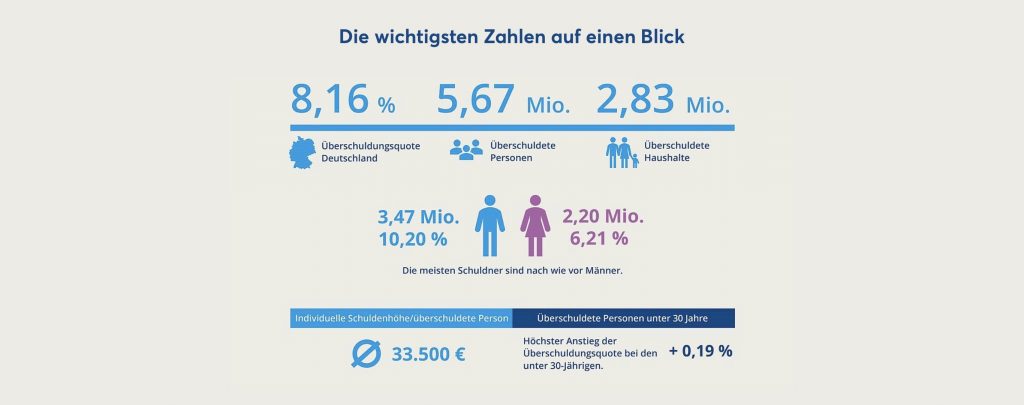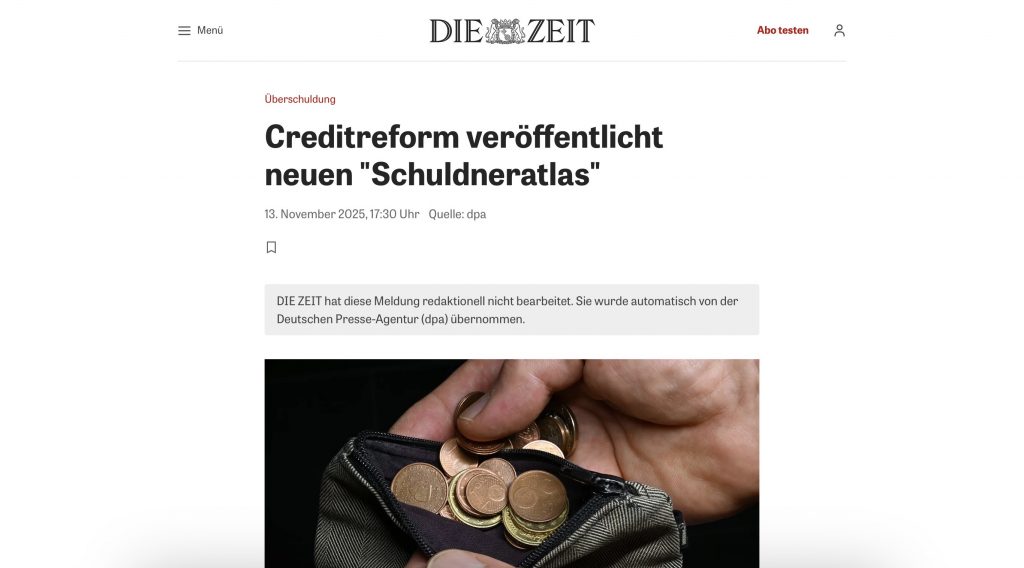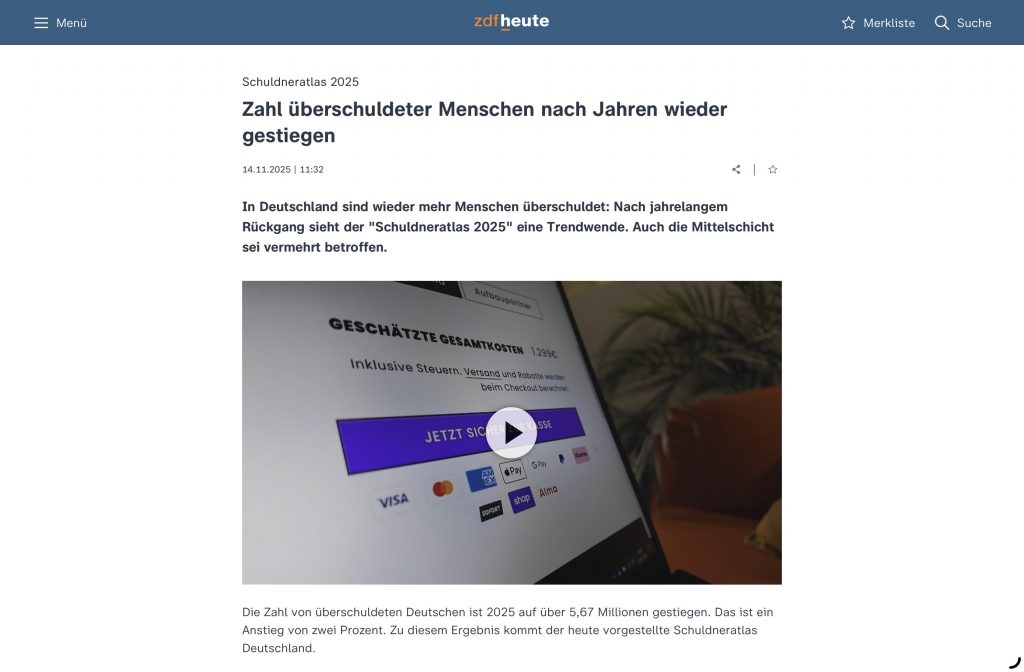Debtor Atlas Germany 2025
It is with genuine satisfaction to announce the collaboration between Creditreform and Experian. Together, we are stepping into a new generation of data- and analytics-driven insights around household over-indebtedness in Germany: the Debtor Atlas Germany 2025.

Why this partnership matters
At the outset, let me reiterate: when Mr Bütow introduced this morning’s presentation, I was honoured to be taking part as Experian representative for the first time in the publication of the SchuldnerAtlas. What becomes immediately clear as one reviews the findings is this: the analysis of over-indebtedness among consumers remains a highly topical issue — and it will continue to be so in the years ahead.

In our joint view, it is therefore absolutely sensible that Creditreform and Experian combine their data-capabilities.
With this strategic cooperation we have achieved something that can be described as quite a quantum leap for the German market. Together we merge our competencies in data analysis — thereby creating real added value for the data-foundation of the Debtor Atlas Germany.
Concretely this means:
- The high-quality microm and Creditreform data are, in part, being combined with the international data- and technology ecosystem of Experian. We provide an expanded data-pool that Creditreform and its subsidiary microm then make available to the research analysts.
- This gives rise to a new generation of creditworthiness and over-indebtedness analyses — a new standard in Germany.
This collaboration thus lays the foundation for an even better assessment of financial risks of private individuals — at all levels: from the macro-economy through to the individual consumer decision.

A new level of data quality for Germany’s Debtor Atlas
From the coming year onwards the Debtor Atlas will be based on extended data models, which bring several advances:
- Depth: The integration of additional indicators relating to income, liquidity-behaviour, instalment credits, digital purchase-behaviour trends, and payment behaviour over multiple time periods allows to perform even more precise micro-analyses.
- More context: By combining economic, demographic and behavioural variables we gain a multi-layered picture. This not only improves the analysis of current over-indebtedness, but also the predictive capability for coming years.
- Greater assurance: At the same time we ensure that data-protection and GDPR-compliance remain of highest priority — with clear governance structures, transparency in data-processing and the highest security standards.
Understanding the Debtor Atlas Germany and its Significance for Decision-Makers in Politics and Economy
The SchuldnerAtlas Deutschland (English: Debtor Atlas Germany) is an annual publication by Creditreform’s economic research unit, which examines how over-indebtedness among consumers in Germany is distributed geographically and how it develops over time.
According to the 2025 edition:

- Some 5.67 million adults over 18 in Germany are classified as over-indebted in 2025 — an increase of 111,000 (+2.0 %) versus the prior year.
- The over-indebtedness rate (quotient of adults affected) rises to 8.16 % (2024: 8.09 %).
- Notably both hard cases (with judicial consequences such as enforcement procedures, collection, arrest warrants) (+39,000; +1.2 %) and soft cases (persistent payment-delays without judicial follow-up) (+72,000; +3.0 %) increased in parallel — a phenomenon not seen since 2017.
- Importantly the study finds that over-indebtedness is no longer merely a problem of the socially disadvantaged. It is increasingly affecting middle-income and even higher-income consumer groups (“lifestyle over-indebted”, “over-indebted pragmatists”).
Why this annual research is so important for politics & business
For decision-makers in government, regional authorities, social policy, as well as for companies in the financial sector, the Debtor Atlas serves multiple strategic purposes:
- Early warning system: The year-on-year development of over-indebtedness gives policy-makers vital insights into the resilience of households. The upward inflection in 2025 is a wake-up call.
- Regional granularity: Because the dataset enables localisation down to districts (Kreise, Städte), regional decision-makers can identify spatial clusters of vulnerability, tailor interventions (financial literacy initiatives, targeted debt-counselling, preventative campaigns) and monitor the efficacy of these measures.
- Behavioural signals: The inclusion of micro-behavioural indicators (purchase behaviour, payment patterns, credit use) provides businesses—especially risk-managers, lenders, insurers—with an advanced behavioural context for segmentation, early-warning, risk pricing or even preventive outreach.
- Strategic planning: For companies, the data supports scenario-planning: which consumer groups are facing increasing strain; which regions may see spikes in defaults; how housing-cost/inflation/interest rate burdens affect demand, credit-take-up and repayment behaviour.
- Public-private dialogue: Governments, regulatory bodies and business stakeholders can engage a common evidence-base. The enhanced transparency fosters stronger trust, better policy collaboration, improved measurement of outcomes (for example: how many beneficiaries of a debt-counselling programme prevented sliding into “hard” over-indebtedness).
- Methodological benchmark: The Atlas has established itself as a methodological benchmark in Germany. Its annual cadence, long time-series and regional detail make it indispensable for trend-tracking, hypothesis-testing and evaluations of policy effectiveness.
Given these dimensions, I believe it is timely to reaffirm the role that high-quality data and analytics play in this domain — and how our partnership between Creditreform and Experian promises to elevate the standard further.

The Added Value of the Creditreform-Experian Data Alliance
In this context I am particularly pleased to emphasise how our strategic cooperation sets new standards in German household finance research:
Strengthening depth of insight
By integrating additional indicators — for example income levels, liquidity behaviour, instalment credits, digital purchase trends, multi-period payment behaviour — we deepen our analytic capability. Via Experian’s international data- and technology-ecosystem combined with Creditreform/microm’s German-specific intelligence we create a richer and broader dataset than previously available. This enables us to segment consumers more precisely, identify emerging vulnerability clusters and tailor risk-profiles along previously under-explored dimensions.
Expanding context and forecasting power
Behavioural, demographic and macro-economic variables are combined to give a layered view of over-indebtedness: why a given consumer or region is vulnerable, how their behaviour is evolving, what triggers may lead to escalation. This multi-dimensional approach enhances not only descriptive analytics but also predictive modelling — enabling policy-makers and business-leaders to move from hindsight (“what happened”) to foresight (“what will happen, and how to intervene”).
Ensuring highest standards of governance and data-assurance
It goes without saying: in a world where data-protection and regulatory compliance (such as GDPR) are non-negotiable, our collaboration anchors these concerns. Clear governance structures, transparent data-processing, anonymisation, highest security standards — all are fundamental. In short: our data-foundation is built not only to be insightful, but to be trustworthy.
Quality assurance for all future research
What this means in practice is that from now on, the joint data-models and analytics-capabilities will serve as the quality-assurance backbone for all future editions of the Debtor Atlas and for forthcoming services that derive from this foundation. In other words: Experian’s data- and analytics-capabilities will help under-pin the excellence and reliability of this highly important annual report.
This matters greatly because for decision-makers — whether in government, corporate risk management, financial services, social policy or regional development — the trust they place in such research depends critically on its methodological robustness and data-quality. With this new partnership we are raising the bar accordingly.

Financial system and economy implications
At macro level, rising household over-indebtedness is a structural risk factor: it dampens consumption, increases default-risk, raises pressure on social systems and may ultimately feed back into economic growth. It underscores the importance of household finance resilience as part of the broader economic health of a country.
For firms, the knock-on effects can range from higher credit-loss provisions, changed consumer spending patterns, changed demand for credit or payment solutions, higher regulatory interest in consumer protection and debt-prevention. For public policy, it underlines the need for monitoring, early intervention and cross-sector collaboration (finance, commerce, social policy, education).

In Conclusion
The partnership with Creditreform represents a forward-looking commitment to better insights, stronger evidence and more robust decision-making across government, business and society.
The Debtor Atlas Germany 2025 arrives at a moment of change: over-indebtedness is no longer declining, but on the rise again; new risk segments are emerging; regional and behavioural nuance is increasingly critical for effective intervention.
With the enhanced data-models, analytics and partnership between Creditreform and Experian, we are ready to meet these challenges. Together, we provide decision makers with a sharper, more reliable compass. The results matter — for individuals, households, companies, and society at large.


